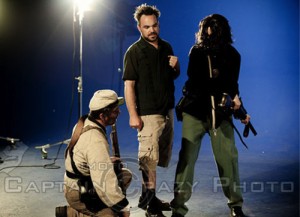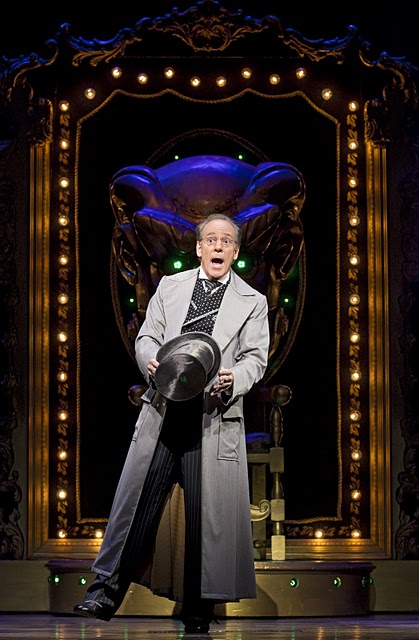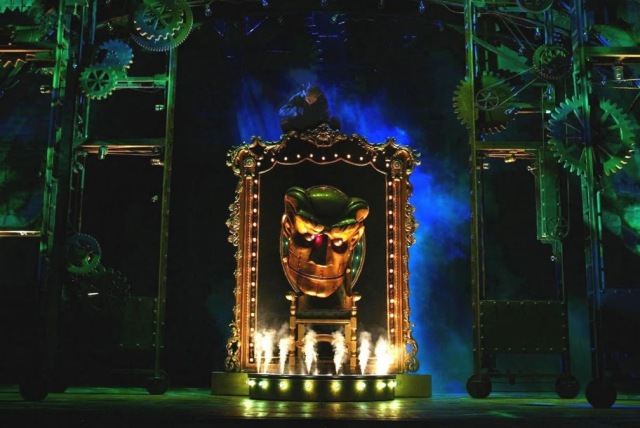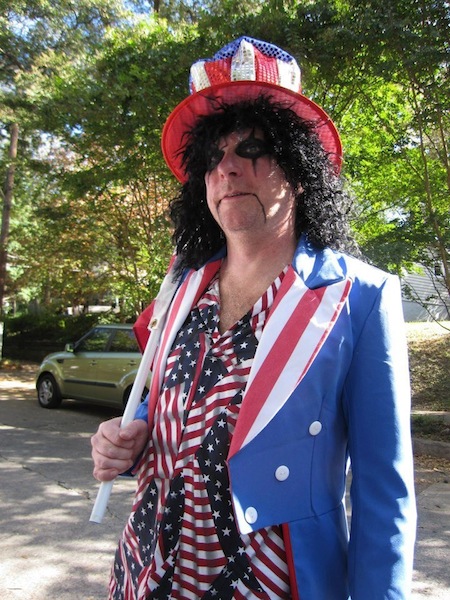
Jeff Clark, Editor/Publisher of Stomp and Stammer, costumed as Alice Cooper for the 2012 L5P Halloween Parade.
Happy Birthday, Stomp and Stammer! There’s no way we’re missing your badass two-day party this weekend at The Earl including Prince Rama headlining on Friday Nov. 22 and legendary soul man Swamp Dogg at the helm on Saturday Nov. 23. Here’s why:
Maybe ATLRetro ought to think of Stomp and Stammer as the competition–and yeah, we’ve been known to sneak more than a peek at their calendar when putting together This Week in Retro Atlanta. But I’d much rather call Atlanta’s independent rock music tabloid an inspiration and Publisher/Editor Jeff Clark a good friend and a kickass music journalist with a no-holds-barred attitude for telling it as he hears it. Sometimes that pisses off folks, sure, but with Jeff’s encyclopedic knowledge of rock from its roots to the present, we think he’s earned the right to call out some pretenders. I’ve joked a few times that I gave Jeff his first big break when I was editing Tuesday Magazine, what the features and entertainment section of Georgia State University‘s student newspaper The Signal was called way back in the 1980s. But I think it was actually my predecessor Brad Hundt. In any case, while I was lucky to have many fine writers back in the day, I stand by the assertion that Jeff was and still is the best.
In any case, Atlanta is damned lucky to have a great free music print tabloid like Stomp and Stammer, especially in this online era. While Jeff has assembled a mighty swell staff over the years, it takes the right pilot and a hefty dose of passion to keep something this awesome going for so many years. If that doesn’t make Jeff a Kool Kat, we don’t know what does, and we’re mighty excited to have the chance to ask him about his own musical roots, how he got into writing, the origin story of Stomp and Stammer, the killer line-up he has booked for The Earl this weekend, and when he plans to throw another of his famous yard sales.
 ATLRetro: With your musical knowledge, we wonder if you were listening to a stereo in the womb. Seriously where do your musical roots start? What age and what did you listen to?
ATLRetro: With your musical knowledge, we wonder if you were listening to a stereo in the womb. Seriously where do your musical roots start? What age and what did you listen to?
Jeff Clark: Hard to remember any specific moment or time, truthfully. I do recall having a little red transistor radio when I was a kid. It was pretty small, about the size of a juice box, and I think it only played AM stations. Back then there was a lot more music on AM than there is today, and I was significantly enthralled by the sounds that were coming out of that thing. I used to carry it around with me all sorts of places, and I think at some point I somehow attached it to my bicycle, probably with tape or rubber bands, so that I would have a radio to listen to while I was zippin’ through the neighborhood doing wheelies.
I used to crudely record songs from the radio onto cassette tapes, and make my own mix tapes that way. Keep in mind that this was early/mid ’70s AM radio, WQXI and stuff, so a good deal of the songs were from cheesy one-hit wonders and such, but to me it was the epitome of cool. I also remember listening to that little radio late one night, in bed, with the volume very low so my parents wouldn’t know I had it on, and you know how on the AM band, especially at night, storms, even at a great distance away, cause interference with muffled crackles and electric frizzle? So “Dreams” by Fleetwood Mac came on, and with all the soft crackly static bursts punctuating the verses intermittently, in the dead of night, alone in my room, it was probably the spookiest song I’d ever heard. “Thunder only happens when it’s raining…” To this day, it’s one of my favorite songs.
A few years later, my older brother was going to Georgia Tech and ended up doing some work at WREK, the college station there. So I started listening to WREK simply because he worked there, even though he wasn’t one of the DJs. That was a major revelation, because that station’s always been so adventurously programmed. I heard all sorts of weird, wonderful music, some of which stuck with me and piqued my interest in the underground scene. I specifically remember hearing the Velvet Underground for the first time on WREK and loving it, although I’ve long forgotten which song it was.
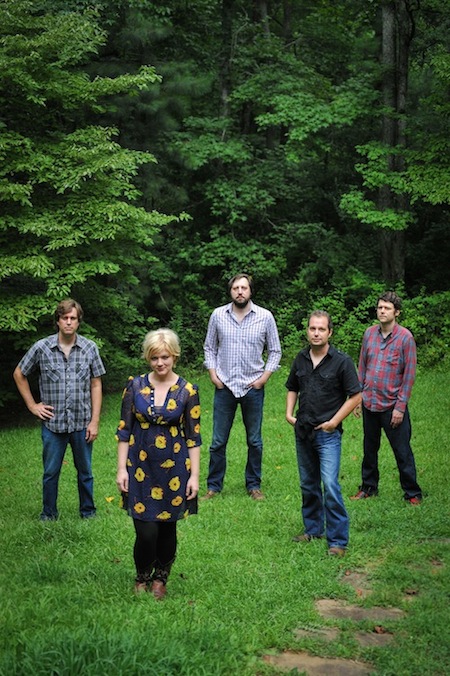
Eye Candy, featuring Shonna Tucker (Drive-By Truckers).
Other memories stick out, like seeing bands on SATURDAY NIGHT LIVE in its early years, when they actually had cool, interesting musical guests. Watching the local TV coverage of the Sex Pistols‘ US debut at the Great Southeast Music Hall. Being introduced to the Ramones by a really cool girl I had a crush on in high school, I have no idea whatever happened to her. Laughing at CREEM magazine. Seeing PiL on AMERICAN BANDSTAND, still one of the weirdest, most anarchic TV appearances by a band I’ve ever seen. The first really big concert I went to was The Who at The Omni. That was 1980, I think. After that it was The Kinks, Dylan, Zappa, all at the Fox, I think. Got a job at Turtle’s Records not too long after high school, and that provided another great avenue to discover new music, and meet fellow fans. By that point I was going to shows at 688, the Agora, the Moonshadow Saloon, etc, all the time, and there ya go.
Did you ever consider being in a band yourself? If yes, what instrument did you play or would you have played?
When I was a kid, like a lot of kids I would fantasize about how cool it would be to be a big rock star in a band that toured the world playing to millions of fans. I had an electric guitar for a while, but never really learned to play it very well at all. I know I should’ve kept at it, but after a certain point I realized I was better suited to channel my deep interest in music in other ways. Besides, I’m pretty certain I would write terrible songs and I’d have to give myself a scathing review, and then I’d let a bitter grudge against myself fester for months upon months until I physically attacked myself in a drunken rage in public one evening. And that would just be embarrassing.
When did you do your band interview, who was the band and when/where was it published? How did it go?
My first band interview was probably not for a publication, but an on-air interview for WRAS when I was attending Georgia State University, late ’80s. But I did lots of interviews for them, and I can’t remember which was the first. My first published interview was for for The Signal, the GSU student newspaper. I started writing for it after I was temporarily canned from 88.5 at some juncture. So my first published interview for The Signal was either Dinosaur Jr (Lou Barlow) or Edie Brickell & New Bohemians (not Edie but their guitar player, can’t remember his name). I hope it was Dinosaur Jr, because that’s at least cool, but then the first band I ever saw play was Dr. Hook & the Medicine Show (a terrible, hokey ’70s act) at Six Flags, so I’ve never really had the cool factor in my favor. As an aside, I started both writing and doing radio while at GSU, and I’ve pretty much consistently done both ever since.
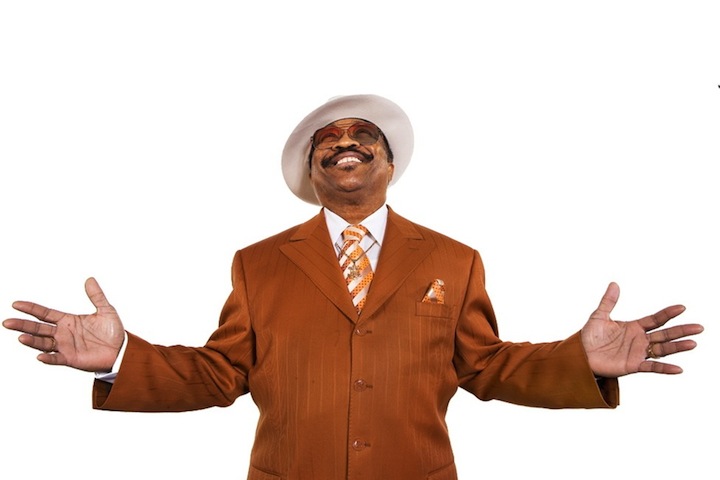
Legendary soul man Swamp Dogg headlines Stomp and Stammer 17th Birthday Weekend, Night Two.
Ha, I think the first rock band I ever saw live was Paul Revere and the Raiders at Carowinds. You’ve watched the Atlanta music scene for over two decades now. What local band are you saddest to say had the most potential but never made it out of here?
There have been lots of them! For a long time, no one paid much attention to Atlanta bands. Like, on a national scale. In the ’80s Atlanta was overlooked because there was so much attention paid to Athens, and in the 1990s, the rap/urban thing started getting huge with So So Def and LaFace and all their acts, so that sort of became known as “the Atlanta sound.” You had exceptions, for sure, like the Georgia Satellites and Indigo Girls and whatnot, but I tended to prefer the more offbeat ensembles. Things like Opal Foxx Quartet, Smoke, Dirt, Magic Bone, King-Kill/33, these were all amazing bands in their own way, but I wouldn’t say that any of them were really destined for mainstream acceptance. Interestingly, in some circles Benjamin (Smoke, OFQ) has posthumously become a small scale celebrity. I mean, there was a multimedia dance performance in New York recently based loosely on his life, featuring Smoke songs. That, to me, is rather bizarre.
These days, with the major label system barely a factor as far as signing new talent, especially in the rock realm, most bands aspire to getting attention from Merge or Vice Records or In the Red or other established indies, if they have any label aspirations at all. Often a band can cultivate a solid following by releasing music themselves, putting it online, using social networking, blogs and word of mouth and touring with other likeminded bands that already have a dedicated fan base. It seems like the potential rewards are far less than they once were, but the ability to make a living playing music is actually more acheivable if a band is good, smart and works hard.
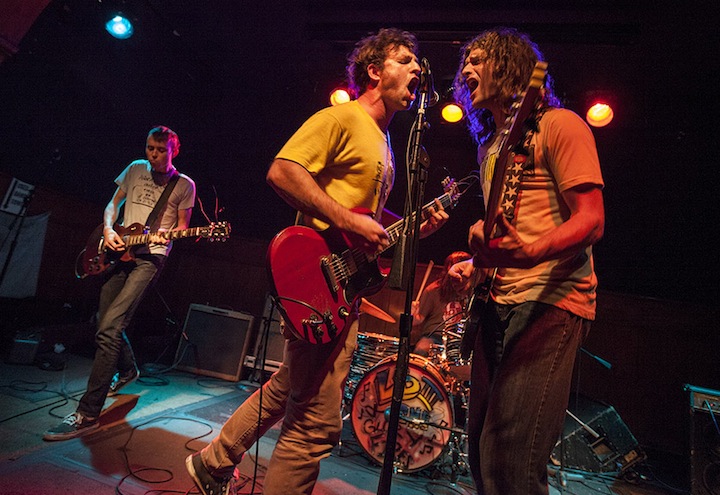
Lee Bains III & the Glory Fires will be be backing up Swamp Dogg on Saturday Night. Photo credit: Barry Breicheisen.
Anyway, back to your question. In the past couple of years, I thought both Knaves Grave and Ghost Bikini were amazing bands that certainly had the talent and potential to break out of Atlanta, at least on the indie label, fill-a-small-club scale if not greater. Both of them broke up a few years after forming. That sort of thing happens everywhere in every city’s scene. It’s disappointing, but what can you do? Bands are often volatile, it’s like a three or four or five-way marriage, and in many cases the personalities aren’t the most mature.
Before Stomp and Stammer, you were writing for multiple news venues, including national outlets like Details? Why did you decide to devote your energies to creating a damned fine local music zine instead?
I think it’s probably because it gives me the freedom to do what I want. I wrote pieces for a few national publications – Details, Raygun, Alternative Press, a few others. That was cool, but I really get more personal satisfaction doing the stupid stuff I do with S&S. That’s probably crazy, I suppose. Also, there aren’t that many national magazines covering good music anymore (meaning, music that interests me) in the print world, and at this point I’d probably make less money doing that anyway. Having S&S gives me an anchor that I know will be there month to month, and I don’t have to keep pitching stories as a freelancer to editors that don’t give a shit about Kid Congo or whoever I’m inspired to write about that day.
Also, for the most part, I hate writing. I do it because I can, and I’m not bad at it, and I’m writing about things that interest me. But most times I’d rather just be able to enjoy music without having to think about it. On the other hand, I have a lot of strong opinions (who knew?) and writing certainly allows an outlet for them. And that’s another thing – I don’t know of a national publication that would let me say some of the things I say. Everyone’s so fucking afraid of offending somebody.

Prince Rama headlines Friday night of Stomp and Stammer's 17th Birthday Weekend.
How did Stomp and Stammer get started? It must have been challenging paying print costs in the beginning, but then you already had a long rolodex of contacts in the music industry and local scene to hit up for advertising.
My friend Steve Pilon started it with me in 1996. Both of us were working at 99X at the time, and we were sort of in charge of putting together this little free monthly music magazine they did for a while to promote the station and the music they played. In retrospect, from 99X’s perspective it was a mistake to put me in charge of such a thing. They did it because I’d been writing for Creative Loafing for several years; therefore, in their minds, I knew how to put together a free magazine. I had no idea what I was doing. Shortly after 99Xpress started in early 1995 I got Steve the job of doing the layout for it. He and his wife had a record label at the time called Long Play Records, they put out Smoke, Opal Foxx Quartet, Big Fish Ensemble, a few other acts, and Steve did the design work for the CDs. Anyway, basically we used that year to experiment and put all sorts of silly things in the 99X magazine, some of which included mocking some of the acts they were playing, which was clearly a mistake and I’m sure ultimately contributed to my dismissal from the station. But we learned how to plan issues, and layouts, and deal with advertisers, and PR people, distribution locations, etc. We learned how to make a magazine.
So it was Steve’s idea to start Stomp and Stammer. He was the publisher, I was the editor. At first it was just an online zine. This was, I think, April 1996. I guess it was sort of ahead of its time, in that respect, so ahead of its time that we found it incredibly difficult to find anyone willing to pay for advertising in an online-only music magazine. So in November ’96, the first print edition came out. I think it was a mix of Steve’s and my contacts in the local scene as well as national labels that allowed us to have a pretty solid advertising base from the get-go. Steve left the fold a few years later to focus on other, more lucrative endeavors. Delusionally, I opted to stick it out. And while everyone tends to treat me as if I AM Stomp and Stammer, we have many talented writers, designers, photographers, distributors, advertisers, etc contributing to every issue, and they deserve a huge chunk of the credit for keeping the operation going.
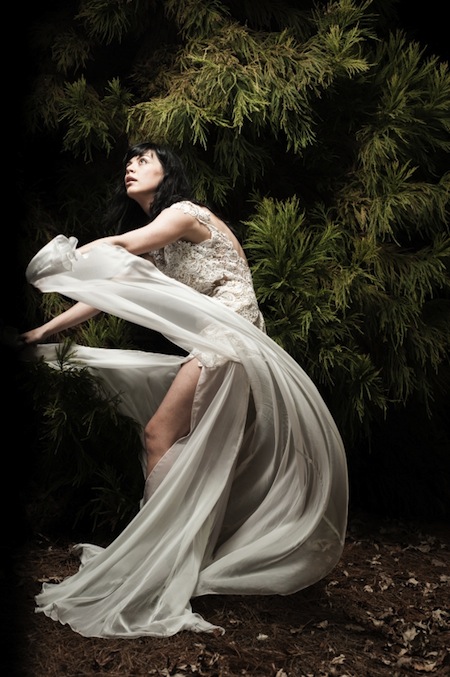
White Woods is on Stomp and Stammer's Friday night line-up.
Why do you still distribute printed copies of Stomp and Stammer versus going online only? And it’s free, too. Is it challenging staying print in an online world?
As far as getting advertising and paying printing costs, that’s always a challenge. I’ve gone through some extremely lean patches at times. Why do we still distribute printed copies? I guess I’m old fashioned. And I think there’s still a significant part of the population that enjoys picking up such things at the record store, or reading while they eat their burrito, or while they’re at the bar, or taking a crap or whatever. There are certain qualities that printed matter can provide that online cannot. Everyone and their mother has a blog nowadays, and I just don’t know if I’d want S&S to just be another one cluttering up the internets. Instead, we’re killing trees and cluttering up the window ledge at Eats. I’ve found it extremely hard to make any significant advertising profit online, then again printing costs are crazy and keep rising. Is one way better or worse? I don’t know.
You have some pretty killer and also diverse line-ups for both nights of Stomp and Stammer birthday shows. Did you have any particular goals in the kind of music/musicians you wanted to include?
I always want to put on a great show and showcase bands that we’re really digging, especially new local bands. If possible, I also like doing things that are a bit out of the ordinary, like people that have never played Atlanta or if they have, then not in a long time. So that usually entails bringing in acts from out of town. Some years I’ll just stick with local bands to keep costs lower, but this year I decided to go for broke and fly in a few headliners that wouldn’t have played here otherwise, and that I think really need to be seen and experienced. I also don’t like repeating myself, so every year I try to get bands that have never played our birthday shows before. And I like to mix up genres a little bit, not just do the same sort of thing.
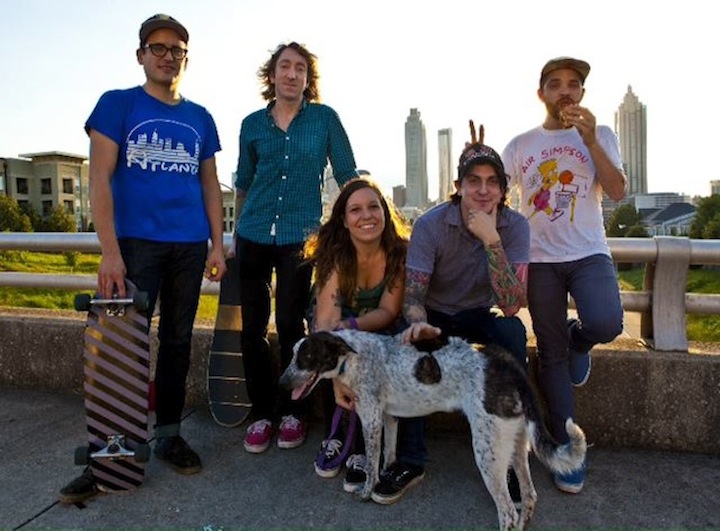
Zoners play Friday night. Photo Credit: Bobb Lovett.
Can you tell our readers a bit about the different acts and what makes them special? Anything else you’d like to make sure they know in advance?
Well, as far as the first night (Friday, Nov. 22), Prince Rama are just one of the most creative, fun, strange, fascinating bands I’ve heard or seen in the past few years. They are two sisters in their 20s who grew up in rural Texas and in Florida in a Hare Krishna community, and now they are based in New York. They have really interesting, inventive ideas about music, art, film and fashion, and they combine all of it together with Prince Rama. Their current music is sort of an amalgmation of dance music, psychedelia, pop and various ethnic sounds from cultures the world over. And they are just really cool people.
Zoners are a fairly new Atlanta band on the scene that look like a bunch of misfits tossed together but have a really tight, punchy pop-punk sound. Catchy original songs, and they cover the Dickies and 999, and that works for me! White Woods is Julia Kugel of the Coathangers. She’s put out two White Woods singles on Suicide Squeeze but has never played a White Woods show ’til now. She’s put together a band including Matt from Zoners. I don’t know exactly what it will be like, but I’m certain it will be wonderful.
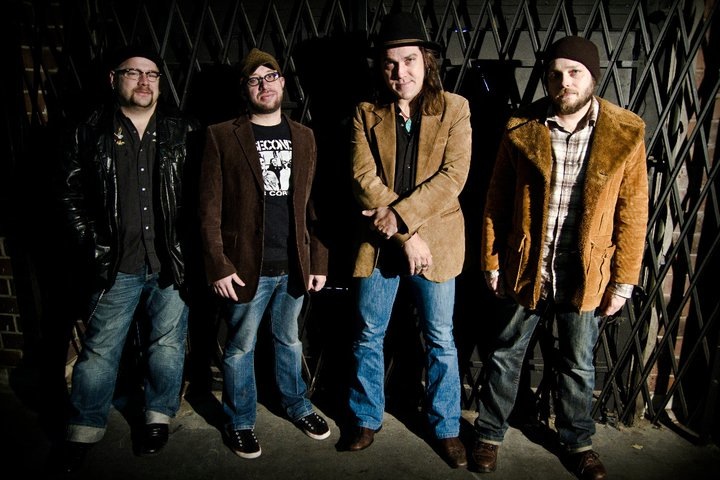
Sodajerk opens Saturday night of Stomp and Stammer's 17th Birthday Weekend.
The next night, Saturday, Nov. 23, we have Swamp Dogg playing what he says is his first show in Atlanta, even though he recorded and produced at studios in Macon, Muscle Shoals and elsewhere in the South throughout the ’70s. He’s a really great soul singer, but his material is a bit more off-the-wall than most of his peers. He’s a funny, wacky character who says “motherfucker” a lot, has tons of stories to tell about his life, and is enjoying a significant comeback this year with the re-release of much of his back catalog via Alive Naturalsound Records. His backing band will basically be Lee Bains III & the Glory Fires, a gritty, raw, powerful, working class outfit based mainly in Birmingham although Lee himself lives in Atlanta. The Glory Fires also recorded for Alive, but I found out Lee was a big Swamp Dogg fan after he and the Glory Fires recorded a version of “Total Destruction to Your Mind,” probably Swamp’s best known song. So a few issues back, I had Lee interview Swamp for S&S, and that turned out so well I thought it’d be cool to take it one step further and have his band and Swamp Dogg collaborate on some shows. They’re also playing together in Athens at the 40 Watt the night before our show.
Speaking of Athens, the Drive-By Truckers are certainly one of Athens’ more popular bands of the past decade-plus, and that’s where Shonna Tucker cut her chops for many years. Now she’s doing her own thing with her band Eye Candy, featuring fellow ex-DBTer John Neff and other longtime Athens players. They have a debut album just out called A TELL ALL, which to my ears combines the sound of prime Muscle Shoals, classic Nashville country and ’70s AM radio playlists. I’m very pleased to have them on our bill this night. Opening the show will be Sodajerk, an Atlanta four-piece who haven’t been playing much lately so I was happy to find out they could do the show. They specialize in loud, crunchy, concise redneck rock ‘n’ roll, perfect for fist-pumping and PBR-pounding.
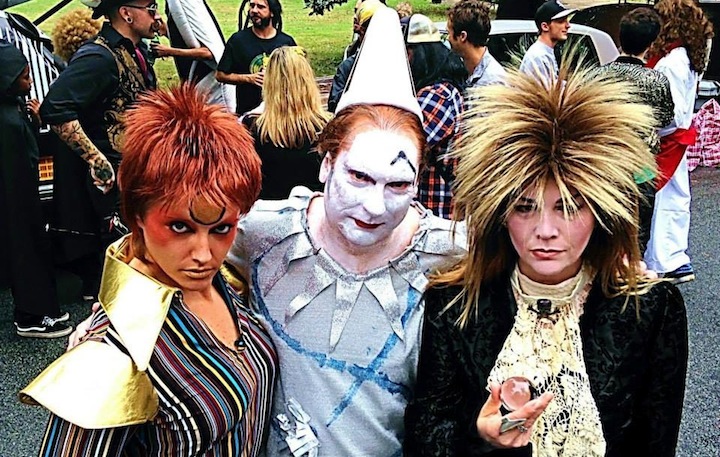
Jeff Clark (center) channels SCARY MONSTERS era Bowie for the 2013 L5P Halloween Parade.
I honestly think these are really strong lineups, and even though they may not be household names, I stand behind every one of these bands and I guarantee these shows are gonna be a blast. I hope you and your readers come out and make party with us!
Finally, we’ve gotta ask, when is your next yard sale?
Next spring. April. Hopefully on one of the first beautiful Atlanta springtime Saturdays of the season.
Creative Loafing just ran a nice little piece on Jeff, too. Check it out here.
All photos are courtesy of Stomp and Stammer and for promotional use only.
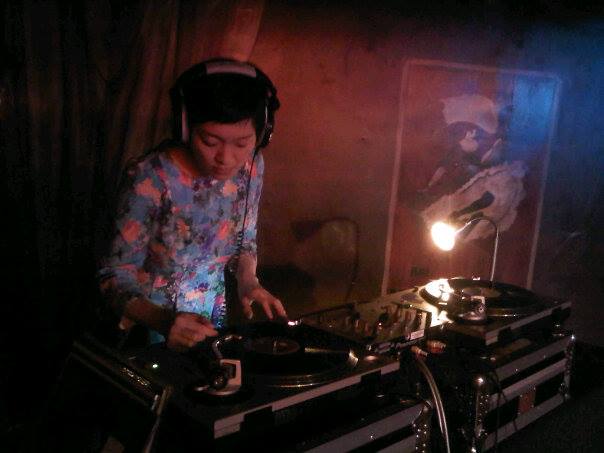
 international music show on WRAS. I knew that I wanted to play a lot of prog, psych, strange folk and other music like that, so I eventually settled on the name Jet Lag. It is the name of an album from one of my favorite bands, PMF (Premiata Forneria Marconi). The name, of course, has to do with tripping, and the topos of travel since the show features music from all over the globe.
international music show on WRAS. I knew that I wanted to play a lot of prog, psych, strange folk and other music like that, so I eventually settled on the name Jet Lag. It is the name of an album from one of my favorite bands, PMF (Premiata Forneria Marconi). The name, of course, has to do with tripping, and the topos of travel since the show features music from all over the globe.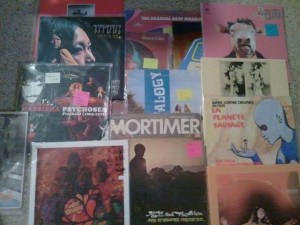
 added to my collection (since I never, ever play computer files on the show). In truth, a lot of the records I buy these days come from overseas, but I often find cool stuff in Atlanta’s awesome used record stores, too. I also like a lot of ‘60s and ‘70s international movies. When I hear things I like, I track them down. Whenever my husband and I visit Korea, we always go to the underground arcades and record stores in Seoul and find fantastic records. I listen to stuff all the time, and I’m always on the lookout for records that I haven’t heard before or that might contain awesome music. The Internet is a really crazy resource, but it goes without saying that if I don’t like something enough to track down a real copy of it—a vinyl copy, that is—I don’t share it on the show. The show is personal. I have to really like something to play it on the air.
added to my collection (since I never, ever play computer files on the show). In truth, a lot of the records I buy these days come from overseas, but I often find cool stuff in Atlanta’s awesome used record stores, too. I also like a lot of ‘60s and ‘70s international movies. When I hear things I like, I track them down. Whenever my husband and I visit Korea, we always go to the underground arcades and record stores in Seoul and find fantastic records. I listen to stuff all the time, and I’m always on the lookout for records that I haven’t heard before or that might contain awesome music. The Internet is a really crazy resource, but it goes without saying that if I don’t like something enough to track down a real copy of it—a vinyl copy, that is—I don’t share it on the show. The show is personal. I have to really like something to play it on the air.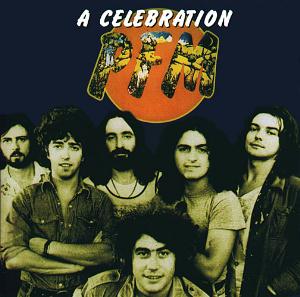
 connects them both for me. Even though I love music, I try not to be that person who shows up at a party and starts talking about nothing but music. Some people seem to be so competitive about what they know. I do DJ around Atlanta occasionally. Also, I enjoy making art about my female calico cat, Reginald.
connects them both for me. Even though I love music, I try not to be that person who shows up at a party and starts talking about nothing but music. Some people seem to be so competitive about what they know. I do DJ around Atlanta occasionally. Also, I enjoy making art about my female calico cat, Reginald.













